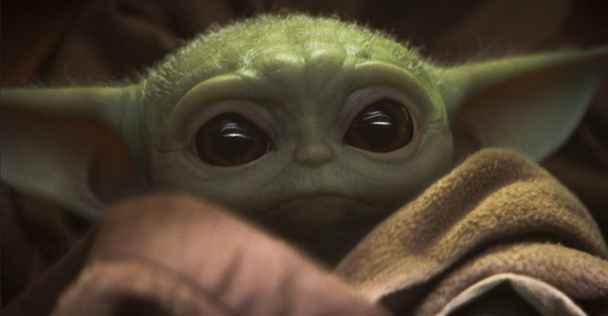Kids will call the shots in video streaming wars
Dylan Collins, chief executive of kids digital engagement platform SuperAwesome, reminds us of the influencing power of children – a key audience in the streaming wars that is often overlooked. As part of The Drum’s deep dive into the future of TV, he reflects on the strategies top brands are using to draw in younger viewers and keep them engaged (and their parents paying) in the long-term.

“Even if I only watch one episode of The Mandalorian a month, my kids are getting hours of entertainment for the same $7.99”
By now everyone is intimately familiar with the real winners of the pandemic: video streaming services. 2021 has been heralded as the year of the streaming wars, with services including Netflix, Disney and HBO all competing for a finite number of household subscriptions. Subscription revenue is considered by public market investors as superior to theatrical revenue as it is inherently more predictable than the erratic performance of movie releases.
A factor which will determine the long-term winners of the streaming wars will be who can develop the deepest engagement with a young audience. Although not a major consumer in their own right, kids’ influence on home and family purchases had been growing steadily since before Covid – and has now exploded.
In a recent survey, 88% of kids under 13 feel they have some influence on which streaming subscription is purchased in their home; 52% feel they have a lot of influence. For those who feel that kids have an exaggerated view of their own importance, on split surveys (parents and children being asked the same question) we consistently find that children underestimate their influence by about 20%. On this basis, approximately 60% of family streaming decisions are heavily influenced by children.
At surface level, every streaming service has considered the kids audience. Netflix and Disney have widely touted annual kids content investment measured in billions of dollars. Although general audience content (such as Justice League, The Office and Star Wars) is the attraction for new subscribers, for parents kids’ content is a critical retention factor. Even if I only watch a single episode of The Mandalorian every month, my kids are getting hours of entertainment for the same $7.99.
However, there is an emerging flaw in this strategy. Content only resonates with kids if they actually care about it. Data from our PopJam platform shows that despite investing heavily in content for young audiences, almost all streaming services are struggling to have meaningful follow-on engagement. Over 47% of kids are watching less content than previously: 48% say this is because they’re bored of the content available and 58.5% say it’s because they can’t find anything new to watch.
But billions of dollars are being spent on children’s content, so what's going wrong here?
Unlike theatrical releases, which aim at general brand impact, streaming services generally do not deploy an engagement strategy to reinforce the value of kids content with the actual kids themselves. This in part due to separate agency teams working on streaming platforms and theatrical releases.
Most subscription service marketing is not targeted at kids for good reason: it’s not allowed to. This would put them into a highly-tracked funnel designed to convert into a paying subscriber, and privacy laws like COPPA, GDPR-K and AADC legally prohibit any behavioral marketing to children for this exact reason (personal data capture). As a result, efforts to engage with kids are virtually non-existent.
So what happens when you ignore kids completely? The recent fortunes of Wonder Woman 1984 (WW84) and Soul are a timely A/B test. In January we asked a panel of US and UK kids whether they had seen ads for both movies. Over 60% of US kids surveyed felt they hadn’t seen any advertising for WW84, whereas this number was just 25% for Soul. Although exact figures haven’t been released on either, anecdotally it seems to correlate with each movie's viewing performance.
The level of positive brand value associated by young audiences with streaming platforms is ultimately going to correlate strongly with retention rates. If I’m not using the service, and my kids aren’t using the service, then psychologically I’m already hunting for the cancel-subscription page. When we asked children the rather intriguing question, ‘do you feel your streaming service cares about kids?’ over 40% of kids said that it didn’t.
Video streaming services are at a tipping point with one of their most important audiences. With vaccination coverage in the US and UK increasing rapidly, schools reopening and outdoor activity returning, it’s almost certain that kids’ viewing will drop in the second half of 2021. This physical distance from devices after a year inside will inevitably increase the existing brand disconnect with streaming services that kids are already showing.
The streaming service platforms are simultaneously facing an audience critical for retention that is getting bored of their content and are not being directly engaged. In a little-reported move, Netflix recently announced a global toy licensing deal with Toikido for their Back to the Outback kids IP. This is an unusual move for the streaming giant but, in light of the data we are continuing to see, makes absolute sense as an engagement strategy.
Covid-19 has established kids as a full digital citizen in the home – and any service aiming for a secure place in the living room needs to win their respect and trust.
Dylan Collins (@MrDylanCollins) is the chief exec of SuperAwesome, a leading kids digital engagement platform.
From late April until early May, The Drum is taking a deep dive into what’s in store for the small screen as we launch our Future of TV hub.

